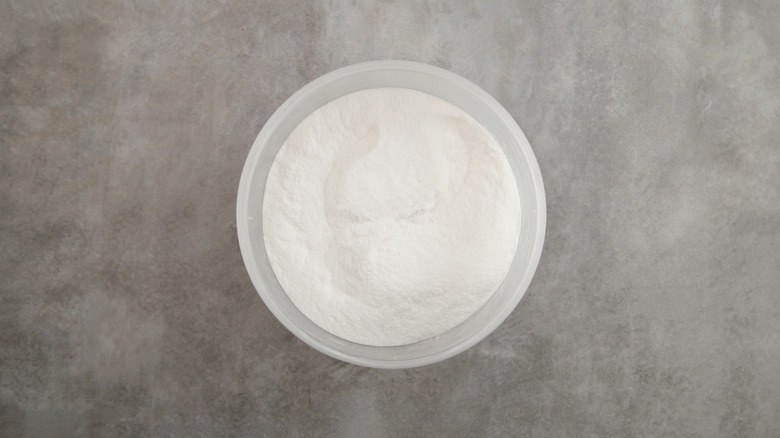What The Heck Is Meat Glue And Why Is It In Your Steak?
We may receive a commission on purchases made from links.
There are a couple of different ways you might have stumbled upon what's often called "meat glue." One way is in your steak. Have you ever seen a lower quality restaurant steak pull apart so easily in certain spots that it seemed to be multiple cuts of beef welded together? You can thank meat glue for that steak hodgepodge. Alternatively, you might first see the term show up in a recipe for dishes with multiple types of protein (i.e. seafood and poultry) which need extra help to stick together. The official, chemical name of meat glue is transglutaminase, although it's sometimes known by the brand name Activa, and it's entirely possible you've eaten it before.
This meat glue or transglutaminase is typically sold in the form of a white powder, which you can pour into a dish to combine different types of meat and make them stick together. It's hardly an appetizing ingredient, and plenty of butchers or chefs don't like to serve steaks cobbled together like Frankenstein's monster, which can mess with the steak's internal temperature. Some restaurants still use it because of cost-cutting measures. For example, you can assemble different, smaller pieces of steak from different sources into a single steak and serve it. Other chefs like the creativity it offers. You can use it to firmly wrap chicken inside of bacon and not worry about anything falling apart or it can help you create chimeric Thanksgiving dinners like turducken.
The inner workings of meat glue
To break down how it works, let's start with what exactly meat glue is. Transglutaminase is an enzyme which is naturally found in animals (including humans) which plays small roles in plenty of bodily functions such as blood clotting. That said, the meat glue you can purchase is artificially formed from bacteria, not harvested from animals. When turned into a powder form and slathered onto pieces of steak, it can naturally meld meats together by causing proteins to bond. For the most part, transglutaminase is generally recognized as safe with a couple of precautions. In 1998, the U.S. Food and Drug Administration (FDA) determined that the compound is not dangerous when used in meat products.
However, it is known to flare up symptoms in people with Celiac disease, a condition where your body can't properly digest gluten. On top of that, transglutaminase is sometimes linked to increased bacterial infections, likely because dishes which include it typically combine several different types of meat, each of which brings its own small risk (especially when they're lower quality meats). Keep in mind any guests with food allergies or food intolerances, and make sure the meat you're gluing together is properly cooked and kept sanitary to avoid food safety hazards, and you should be fine.

